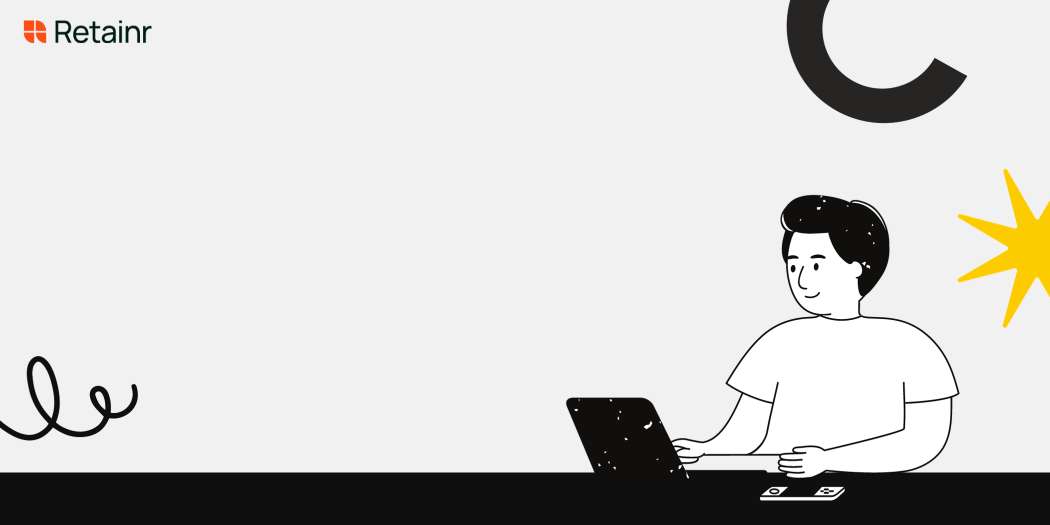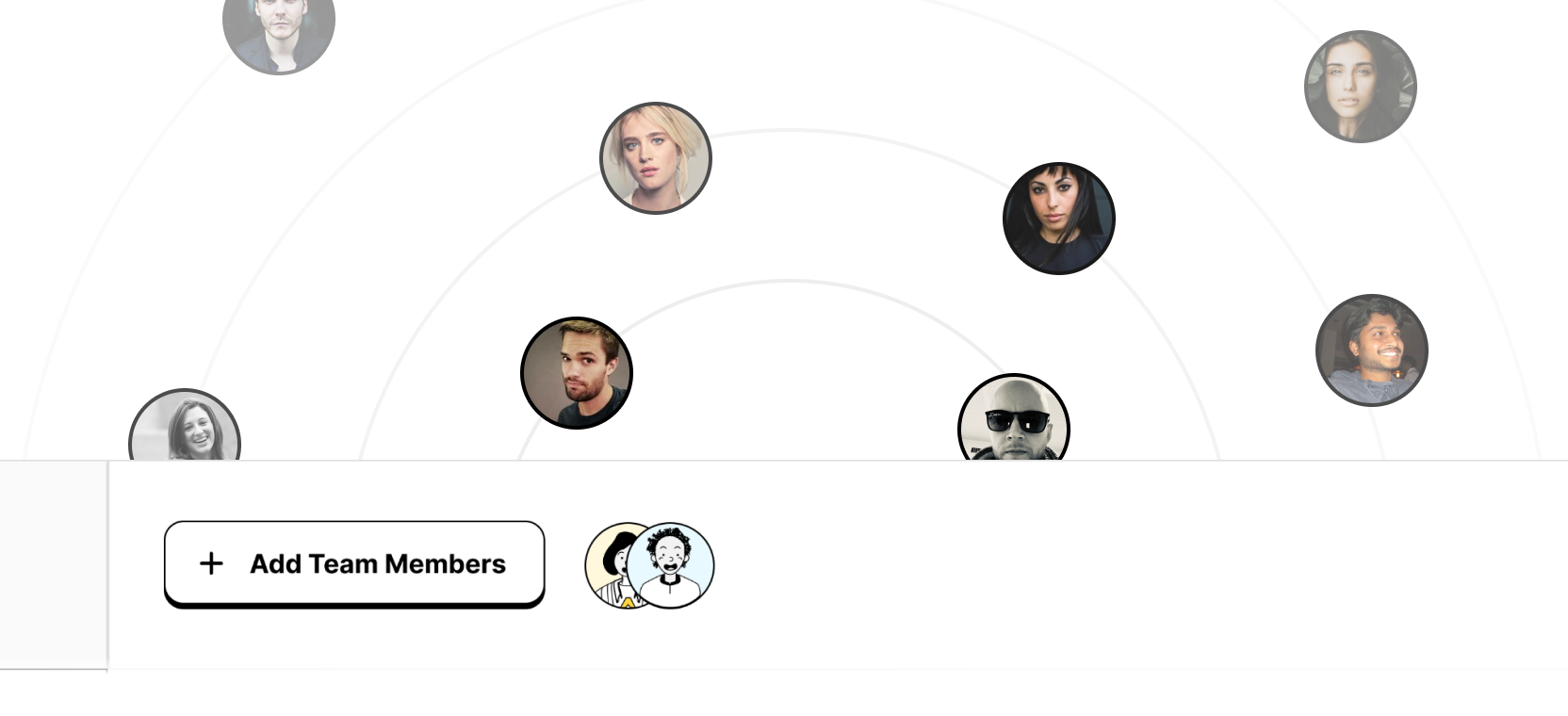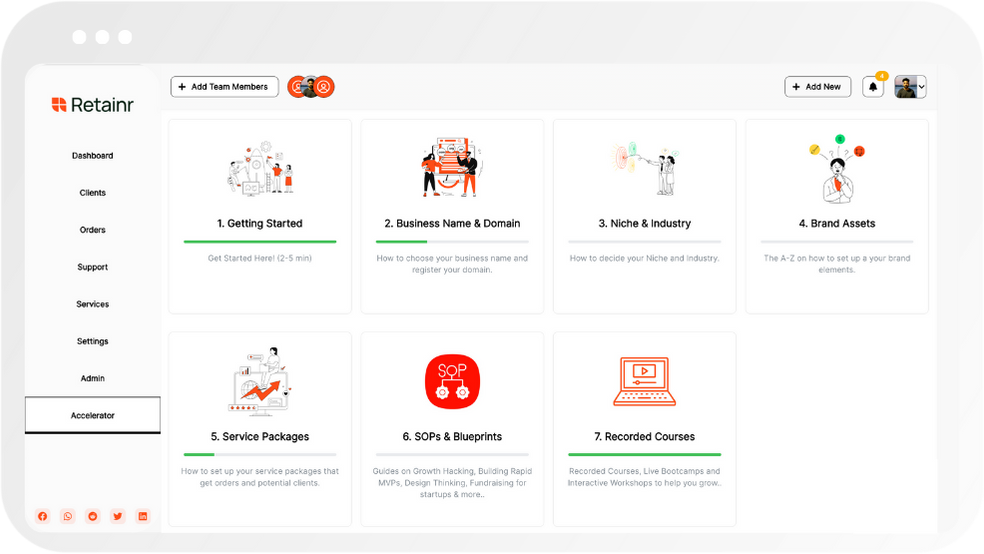
How to Get Customer Testimonials and Why They Matter
Build with Retainr
Sell your products and services, manage clients, orders, payments, automate your client onboarding and management with your own branded web application.
Get Started1. Why are customer testimonials important for my business?
Importance of Customer Testimonials for Business
The importance of customer testimonials for your business can't be overstated. They can boost your company's credibility, add social proof to your marketing efforts, and foster trust among prospective clients. Here are a few reasons why customer testimonials are crucial:
- Boost Credibility: Testimonials from satisfied customers add an element of credibility to your business. They show that you have a track record of success and customer satisfaction.
- Social Proof: Customers often look to others for insight before they make a purchase. Positive testimonials from satisfied customers act as social proof that others had a good experience with your business.
- Foster Trust: Displaying customer testimonials can foster trust with prospective customers. The positive experiences of your past clientele can give potential future clients the confidence to do business with you.
How Customer Testimonials Impact Business Statistics
The following table presents the powerful impact of customer testimonials on consumer behavior and the overall success of a business. According to recent survey statistics:
| Statistic | Impact |
|---|---|
| 92% of consumers read testimonials and online reviews before making a purchase | Enhances the influence of your business on consumer buying decisions |
| 72% of consumers say positive testimonials increase their trust in a business | Improves your credibility and fosters trust among your target audience |
| 88% of consumers trust online testimonials as much as personal recommendations | Makes testimonials a highly effective strategy for attracting new clients |
Integrating Customer Testimonials into Business Strategy
Getting customer testimonials should be an essential part of your business strategy. They can be integrated into your website design, social media strategy, email marketing campaigns, and even your product packaging. Here are a few ways you can gather and leverage customer testimonials for your business:
- Direct Ask: Reach out to your satisfied customers and ask them to share their positive experiences.
- Surveys: Use customer satisfaction surveys to gather feedback and powerful testimonials.
- User-generated content: Leverage the power of user-generated content on social media. This comes in the form of reviews, comments or shared posts praising your product or service.
- Third-party review sites: Encourage your customers to leave reviews on third-party sites like Yelp, Google, or industry-specific platforms.
2. How can I get my customers to provide testimonials?
Creating an Easy Process for Feedback
Your customer needs to feel that their input is valued and giving feedback should not be a cumbersome process for them. Remember to:
- Create an easy-to-fill form on your website, with fields for name, contact details, and the testimonial portion. This way, your customers can provide testimonials at any time with ease.
- When buyers complete a purchase, prompt them to leave a review or testimonial. They are most likely to give feedback when the experience is still fresh in their minds.
- Consider sending a follow-up email asking for a testimonial. Timing is critical here - give your customers enough time to have used your product or service before asking for their thoughts.
Offering Incentives for Testimonials
Although you can get testimonials naturally, offering incentives can encourage more customers to provide them. Some of these incentives could include:
- Discounts or coupons on their next purchase.
- A feature on your website or social media channels.
- Entry into competitions or give-aways.
Keep in mind that incentives should not influence the content of the testimonial. Testimonials should always be honest and impartial.
Properly Organizing and Displaying Testimonials
Once you have collected your testimonials, they should be displayed in a strategic and organized manner on your website. A simple way to do this is by using a table. Here's an example:
| Name | Testimonial |
|---|---|
| Jane Doe | I loved the product! It was super easy to use and made a noticeable difference. |
| John Smith | Excellent customer service and speedy delivery. I highly recommend them! |
This table format lists testimonials in a clear, easy-to-read manner for potential customers to peruse at their convenience.
3. What are the best ways to ask for customer testimonials?
Methods to Collect Customer Testimonials
There are several effective approaches to collecting customer testimonials. The key is to ensure that your request is timely, personalized, and straightforward. A good starting point can be to:
- Directly ask for a testimonial after a purchase or service completion.
- Spark the conversation on social media to motivate customers to share their experiences.
- Send an email requesting a testimonial, ensuring to personalize the message.
- Use survey or feedback forms where there is an option to write testimonials.
Effective Approaches to Asking for Testimonials
Different approaches work better with diverse customer bases. Some customers might be more responsive via email, while others may prefer social media engagement. The ways to phrase the ask also vary depending on the method used. Here are a few strategies:
| Method | Strategy |
|---|---|
| "We value your feedback! Would you mind sharing your experience with us?" | |
| Social Media | "We love hearing your stories! Share your experience with us using #OurBrandStory" |
| Survey/Feedback Forms | "Tell us about your journey with our product/service." |
The Importance of Timing in Gathering Testimonials
Timing is crucial when asking for customer testimonials. Striking while the iron is hot can yield better results. Some optimal timings include:
- Right after purchase: Customers are most likely to share their experiences immediately after the purchase.
- After reporting a positive experience: Opinions recorded after a satisfying experience are usually positive.
- Post-resolution of a customer complaint: Customers tend to offer positive feedback once their issues have been resolved satisfactorily.
4. How do I use customer testimonials effectively to promote my business?
Using Customer Testimonials in Advertising
One way to use customer testimonials effectively is by incorporating them into your advertising campaigns. A positive review can significantly enhance the image of your product or service, persuading potential customers to do business with you.
- Direct Mail: Include a testimonial in your direct mail materials. Typically, these testimonials are short and succinct, focusing on a single aspect of your product or service.
- Print Ads: A testimonial can serve as a headline or a subhead in your print ads. The goal is to instantly grab the reader's attention.
- Online Ads: Due to their interactive nature, online ads can feature video testimonials. These are generally more engaging than their text-based counterparts.
Displaying Testimonials on Your Website
Displaying testimonials on your website can boost credibility and increase conversions. Here is a quick guide on how to strategically position them.
| Page | Testimonial Type |
|---|---|
| Homepage | General testimonials that highlight the overall quality of your service or product. |
| Product/Service page | Specific testimonials that provide detailed reviews about a particular product or service. |
| Contact us page | Testimonials that reaffirm your commitment to customer service and satisfaction. |
Leveraging Social Media
Social media platforms provide a perfect opportunity to share customer testimonials and interact with your audience. Here are some ways to use them effectively on these platforms:
- Create a series of posts that share different testimonials. Make sure these posts are visually appealing to get more attention.
- Use testimonial quotes as captions for related images or videos.
- Repost customer reviews or mentions from their own social media accounts, ensuring you have obtained their permission first.
5. Can you explain how customer testimonials have an impact on sales?
Impact of Customer Testimonials on Sales
Customer testimonials play a pivotal role in influencing sales by reassuring prospective customers about the quality of your goods or services. They provide social proof, leverage the power of word-of-mouth marketing, and provide a chance to demonstrate how your product or service has satisfied the needs of customers.
Social Proof
Online buyers are frequently skeptical of purchases due to the risk associated with online transactions. Testimonials alleviate this uncertainty by giving social proof. They confirm that others have purchased and benefited from the product, which can persuade new customers to buy. Here is a summary table of how testimonials provide social proof:
| Testimonial Description | Impact on sales |
|---|---|
| Positive reviews from customers | Builds buyer trust and encourages purchases |
| Photos or videos supporting the testimonial | Further validates the testimony and increases its influence. |
Word-of-Mouth Marketing & Demonstrating Satisfaction
Customer testimonials essentially function as a powerful form of word-of-mouth marketing. This marketing strategy is particularly effective because people tend to trust and value recommendations originating from their friends, family, or other customers. Furthermore, by showcasing how previous customers have been satisfied with the product or service, testimonials prove that it delivers on its promises.
- Word-of-mouth Marketing: Testimonials, especially when shared on social media, drive sales by increasing brand exposure and trust.
- Demonstrating Satisfaction: Satisfied customers' testimonials reassure prospective buyers that they are likely to benefit from the product/service too.
6. How can I encourage customers to leave positive testimonials?
Encouraging Customers to Leave Positive Testimonials
Generating positive testimonials from customers requires a proactive approach. It's not enough to simply provide great products or services - you have to ask for feedback in the right ways at the right times. Here are a few ways you can encourage customers to leave positive testimonials:
- Ask at the right time: Timing is crucial when you are soliciting testimonials. The best time to ask is generally after a customer has had a successful interaction with your business. This could be once they've received their order, used the product, or had a positive customer service experience.
- Make it easy: The more simple and seamless the process, the more likely customers are to take the time to provide a testimonial. Provide clear instructions, offer multiple channels (email, social media, website), and consider creating a guided testimonial form to streamline the process.
- Offer incentives: Incentives can give a little extra push to customers who are on the fence about writing a testimonial. This could be anything from a small discount on their next purchase to a chance to win a larger prize.
The Impact of Positive Testimonials
The significance of positive testimonials cannot be underestimated, as they significantly influence a prospective customer's perception of your brand. Here's how they can influence your business’s success:
| Impact | Description |
|---|---|
| Boost credibility | Testimonials establish trust and credibility by showcasing the experiences of real customers. They serve as social proof that your products or services live up to the claims you make about them. |
| Increase conversion rates | Positive testimonials can convince potential customers to choose your products or services over others. They can help to remove any doubts or reservations, leading to higher conversion rates. |
| Enhance brand reputation | A collection of glowing testimonials can significantly enhance your brand's reputation. It shows that you consistently meet or exceed customer expectations, establishing you as a reliable choice in your industry. |
7. What should I do if I receive negative customer testimonials?
Handling Negative Customer Testimonials
Negative customer testimonials are inevitable in any business. While they can be disheartening, they are also opportunities for growth and improvement. Here's what to do when you receive negative feedback:
- Don't ignore it: Not responding to negative reviews gives the impression that you don't care about customer complaints or perspective.
- Stay professional: Respond to the criticism in a calm, professional manner, regardless of how the customer behaves.
- Apologize and offer a solution: Empathize with the customer, apologize and explain steps you will take to prevent a recurrence.
- Learn from it: Use the feedback as a chance to improve your product or service.
Impact of Negative Testimonials
The way you respond to negative customer testimonials can have a significant impact on your business. A pertinent handling of poor feedback can convert a dissatisfied customer into a loyal one, and showcase your excellent customer service. The table below highlights some potential impacts:
| Impact | Positive | Negative |
|---|---|---|
| Customer Retention | Highly likely if handled properly | Highly unlikely if ignored or handled poorly |
| Business Reputation | Can improve by showing great problem-solving skills | Can significantly damage if the issue remains unresolved |
| New Client Acquisition | Potential increase as new customers see your commitment to solving problems | Potential decrease as negative reviews can deter potential customers |
Conclusion
In conclusion, while positive testimonials affirm your business, negative testimonials offer an opportunity to not just rectify mistakes, but also to demonstrate your exceptional customer service. The key is to respond promptly, professionally, and purposefully make changes where required.
8. How can I showcase customer testimonials on my website or social media?
Displaying Testimonials on Your Website
There are many effective methods to showcase your customer testimonials on your website. Make sure you display them in a way that grabs the attention of website visitors:
- Homepage: Dedicate a section of your homepage to display selected testimonials. Your homepage is one of the most visited pages so adding testimonials here can catch attention quickly.
- Testimonial Page: Create a separate page for testimonials and regularly update it with fresh reviews. This page can then be easily linked on other parts of your website, such as in product descriptions or blog posts.
- Sidebar: If appropriate, add testimonials to the sidebar of your website, rotating different reviews to keep the page fresh.
Showcasing Testimonials on Social Media
When it comes to social media, testimonials can make a significant impact. Here are some proven methods to showcase your testimonials effectively:
- Regular posts: Regularly post customer testimonials on your feed. Schedule them so they appear consistently among your other posts.
- Stories and highlights: Instagram stories and Facebook stories are great places to share customer testimonials. Also you can highlight them for permanent display on your profile.
- Community Posts: Platforms like LinkedIn and Facebook allow community posts where you can share customer testimonials.
Examples of Testimonial Display Formats
| Display Format | Description |
|---|---|
| Quote | This is the most common format where you share a direct quote from the customer. |
| Interviews | You can record an interview with the customer and share video or audio excerpts on your platforms. It provides a detailed personal experience which can have a strong impact. |
| Case Studies | Case studies provide a comprehensive view of how your product or service solved a problem or improved a situation for a customer. |
9. Are there legal considerations when asking customers for testimonials?
Legal Considerations When Asking for Testimonials
Yes, there are indeed some legal aspects you have to keep in mind when seeking testimonials from your customers. Ignorance or negligence on this matter can lead to legal complications, including penalties. Here are the three main considerations:
- Consent : You must ensure that you have obtained explicit permission from your customers before using their comments as testimonials. You can ask them to provide written consent forms or use electronic consent mechanisms.
- Fairness : You are obligated to represent testimonials in a fair and honest manner. This means avoiding any alterations that might distort the original message of the testimonial and avoiding major edits.
- Privacy : You need to protect the identity and personal information of your customers in their testimonials. Depending on your jurisdiction, you might need to anonymize certain pieces of information or get additional consents.
Example of Legal Consent Request
To demonstrate, here’s an example of how you might structure a legal consent request for a testimonial:
| Name | Agreement | Signature |
|---|---|---|
| John Doe | I, the undersigned, hereby give Company XYZ the right to publish my testimonial for promotional purposes. | John Doe |
The Importance of Legal Considerations
Complying with these legal considerations is not just about avoiding penalties, but also about building trust and credibility with your customers. They need to know that their feedback will be used responsibly and that their privacy will be honored. If customers feel that their trust has been betrayed, the negative backlash could outweigh any potential benefits from the testimonials. In conclusion, always keep these considerations in mind and always prioritize the rights and needs of your customers. This approach will serve your brand well in the long run.
10. How often should I ask my customers for testimonials and update them on my website or marketing materials?
Frequency of Requesting Customer Testimonials
There is no hard and fast rule about how often you should ask your customers for testimonials. This largely depends on the nature of your business, the frequency of customer interaction, and your strategy for utilizing testimonials.
- Continuous businesses: If your business continually maintains interaction with customers, such as a service provider or a Software as a Service (SaaS) company, you should consider asking for testimonials periodically. This could be, for instance, every three months.
- One-time businesses: For businesses with one-off transactions, like retailers or event organizers, it's best to ask for a testimonial shortly after the customer's purchase or event attendance, when their experience is still fresh.
- Strategy-based: Depending on your marketing strategy, if you're launching a new campaign or updating your website, this might be an excellent time to gather fresh testimonials.
Updating Testimonials on your Platforms
Updating testimonials on your website or marketing materials should be a regular activity regardless of your business type. Mixing old and new testimonials can show longevity and consistency in your business. Different businesses might need different updating frequency, as shown in the table below:
| Business Type | Updating Frequency |
|---|---|
| Constant Interaction (e.g. SaaS) | Every 3-6 months |
| Seasonal Business (e.g. Tax services) | Before and after the peak season |
| Project-Based (e.g. Construction) | After completion of a major project |
The Importance of Regular Updates
Regularly updating testimonials is essential as it exhibits your most recent success stories and keeps your marketing materials up-to-date and relevant. Potential clients will be influenced more by recent testimonials compared to outdated ones. Also, continually gathering and updating testimonials accommodates your growing business and mirrors its evolution and progress to potential customers. In addition, frequent updates enable the recognition of consistent customer satisfaction, and it may lead to improvements in your services/products based on customer feedback.
Conclusion
Ultimate Approach on How to Get Customer Testimonials
Gathering customer testimonials is a crucial part of building credibility with potential clients. Testimonials provide evidence that your company has delivered on its promises in the past. They give your business an interactional dimension that allows potential customers to see what it's like to buy from you.
How to Acquire Customer Testimonials
Here's the process to gather those useful testimonials:
- Ask your satisfied customers directly for a testimonial. It could be a direct ask after a successful project completion.
- Send an email or direct mail survey to gather feedback and ask permission to use the positive ones as testimonials.
- Use the feedback from comment cards or online customer reviews on websites like Facebook or Google
Why Customer Testimonials Matter
Testimonials establish credibility, build trust, and provide social proof. When customers praise a product/service, it informs other potential clients of its effectiveness. The personal experience embedded in the testimonial can persuade potential clients to buy because it resonates with them more than the generic product descriptions.
Managing this process can turn into a headache without the proper tool; this is where Retainr.io comes in.
How Retainr.io Simplifies Testimonials Collection and More
Retainr.io is a powerful white-label software that makes all aspects of client management extremely easy - including gathering those essential testimonials. Its robust features make it easy to sell your products or services, manage your clients, orders, and payments, all under your own branded App. To begin streamlining your business operations, visit Retainr.io now and explore more!
Boost Your Agency Growth
with Retainr Accelerator
Uncover secrets, strategies, and exclusive blueprints to take your agency's growth to the next level — from marketing insights to effective presentations and leveraging technology.

SOPs, Cheatsheets & Blueprints
Leverage 50+ SOPs (valued over $10K) offering practical guides, scripts, tools, hacks, templates, and cheat sheets to fast-track your startup's growth.
Connect with fellow entrepreneurs, share experiences, and get expert insights within our exclusive Facebook community.
.jpg)

Join a thriving community of growth hackers. Network, collaborate, and learn from like-minded entrepreneurs on a lifelong journey to success.

Gain expertise with recorded Courses, Live Bootcamps and interactive Workshops on topics like growth hacking, copywriting, no-code funnel building, performance marketing and more, taught by seasoned coaches & industry experts.

.jpg)

.jpeg)


